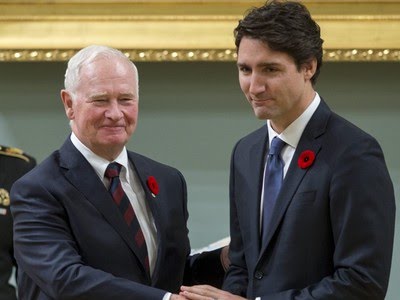
On Monday night, Alberta’s NDP seriously contested for power, they were just a few thousands, votes spread across a handful of Calgary ridings, from forming government again. In Ontario, the idea that the NDP is a serious contender for power remains laughable, they haven’t come close to winning an election since 1990.
Almost 30 years after Bob Rae vacated the premier’s office, Ontario’s NDP have become nothing but a protest party. Not for the working class, not for the oppressed but a protest party for the province’s well paid civil servants.
From our newsroom to your inbox at noon, the latest headlines, stories, opinion and photos from the Toronto Sun.
In 2018, the once mighty Liberal Party was reduced to a caucus of just seven MPPs, they could all commute to work together in a single minivan. That should have been the opportunity for the NDP to step forward and transform themselves into the progressive option in the province.
In Alberta, just as in Saskatchewan, Manitoba and British Columbia, provincial elections are a contest between the NDP and the local variation of the free market coalition party.
Five years ago, the New Democrats at Queen’s Park had the chance to turn Ontario into the next two horse race jurisdiction in Canada. They needed to make moves to convince Liberal voters to move towards them, they needed to attack the Liberal Party, then on life support, with the same vigour they attacked the government.
They didn’t do that under now former leader Andrea Horwath and in the 2022 election, the NDP lost nine seats compared to the 2018 campaign and got fewer votes than the Liberals who still failed to achieve official party status after winning just eight seats.
Yet, the Ontario Liberal leadership race is getting plenty of attention and a candidate who isn’t even officially in the race yet, Mississauga Mayor Bonnie Crombie, is getting far more media coverage than newly minted NDP Leader Marit Stiles.
Stiles took over the leadership officially in March but in reality much earlier given that she ran unopposed. So far, she’s following the same pattern as Horwath did in the last few years, speaking mostly to issues that appeal to the party’s base of unionized government workers and issues that appeal to downtown voters the NDP already has.
In Western provinces, the NDP has learned how to compete for voters everywhere, in Ontario they haven’t, though that’s a suggestion that Stiles bristles at when asked in the foyer of Queen’s Park.
“Well, you know what I would say sir, is that I intend to change that in three years and that right now what I’m continuing to do is build the movement out there all across this province to take on this government,” Stiles said.
Taking on the government using the same talking points that saw the party lose seats in the last election isn’t a winning strategy, but so far, that’s the plan Stiles is following. It’s a strategy that has seen the NDP lose much of the blue-collar working class base that they once relied on in favour of white-collar bureaucrats and academics populating university campuses across the province.
It’s all well and good for the NDP to win in downtown Toronto, but when they lose seats in Hamiton, Windsor and Timmins to the PCs as they did this last election, then the party needs to chart a new course and so far, there is no evidence of that.
Alberta is generally regarded as much more conservative than progressive leaning Ontario. Those generalizations aren’t true reflections of either province for those who know them but perhaps Ontario’s NDP should look at how and why Alberta’s NDP came within a whisper of winning power, why Manitoba’s NDP is on the cusp of power and why the party is still governing B.C.
Those provincial parties, agree with their policies or not, are serious about governing, not just being a protest party.








